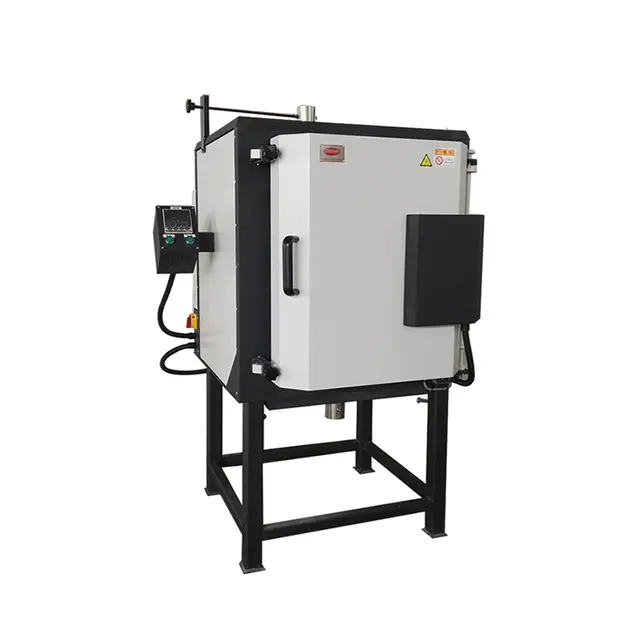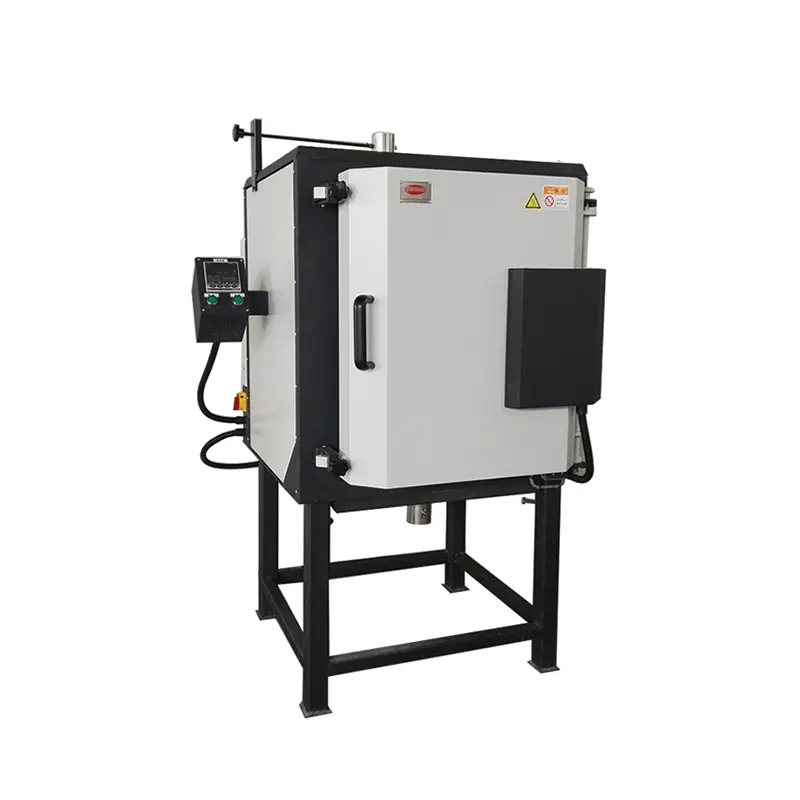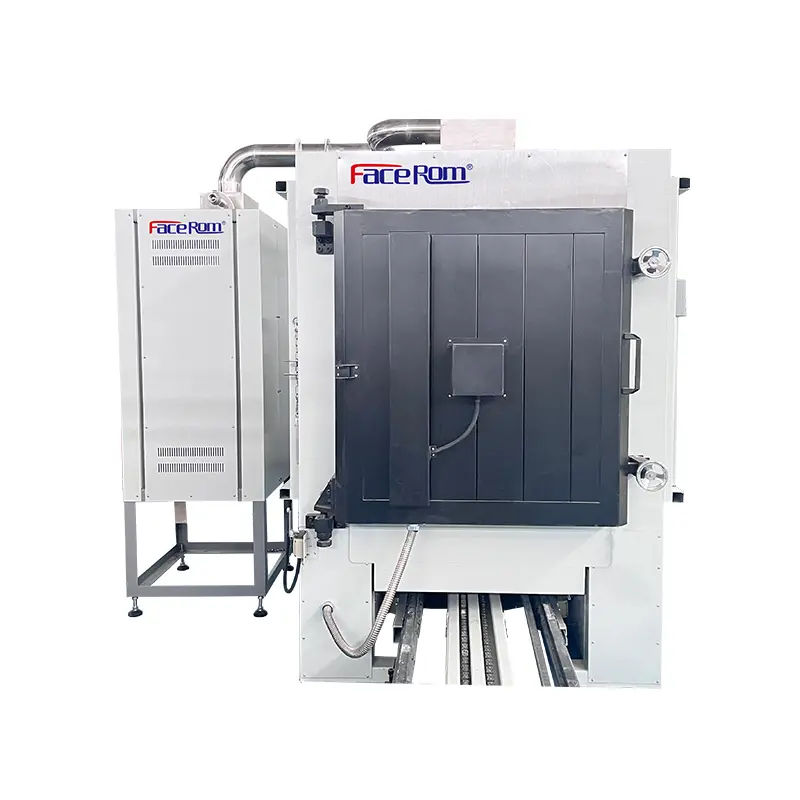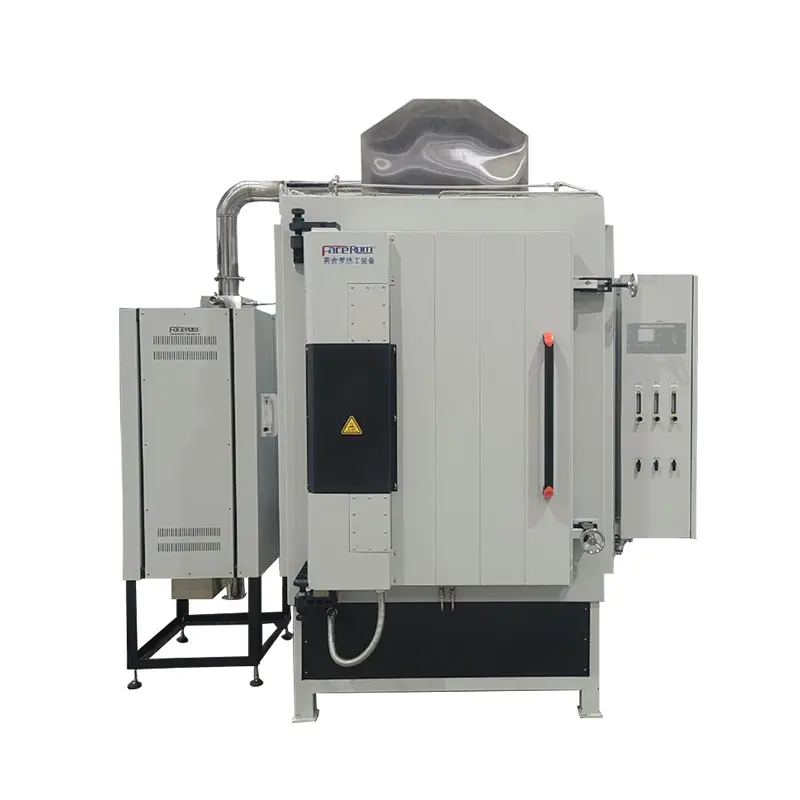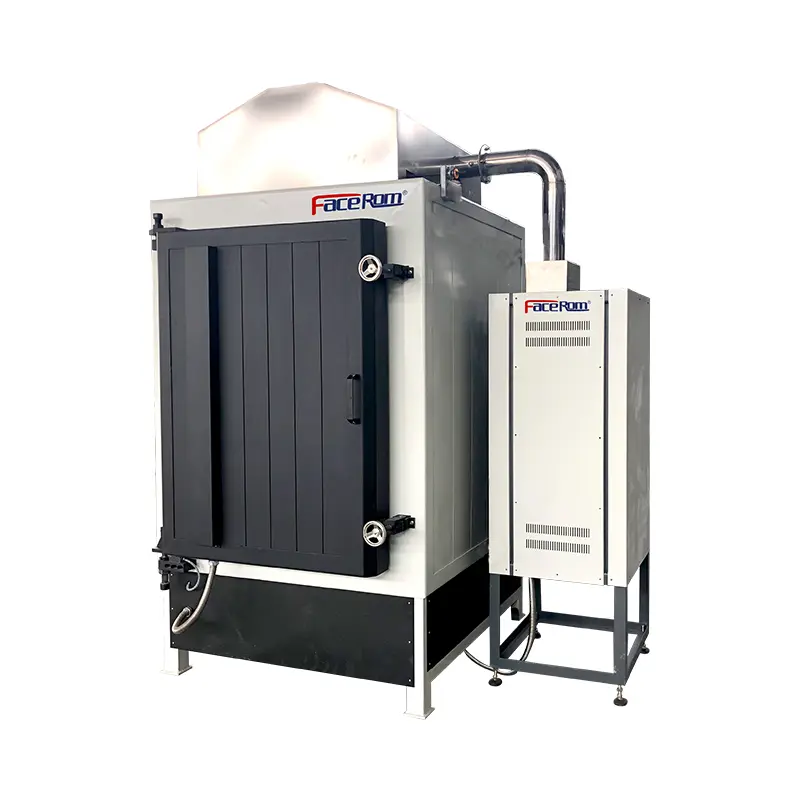Combined debinding and sintering cycle saves time and boosts efficiency.
Eliminating the binder phase within a single combined cycle, which includes sintering, significantly reduces total cycle time compared to separate debinding steps. This approach also minimizes the risk of damaging delicate parts when transferring trays from the debinding oven to the sintering furnace.
Safety options for debinding furnaces
The debinding process generates volatile substances that may pose health risks. Appropriate measures should be implemented to mitigate these hazards. Carbolite debinding furnaces offer various options designed to enhance and optimize the production workflow.
Condensate trap
A condensate trap (shown on the right) captures all compounds with boiling points above 20 °C, while allowing volatiles with boiling points below 20 °C to pass through.
Heated gas outlet with a heating band
A heated gas outlet (shown on the right) is employed to prevent the formation of condensates in the outlet.
Afterburner
An afterburner (left) oxidizes volatiles from the removal process into NOx, CO2, and H2O, ensuring that all volatiles are converted into safer compounds before being released into the environment. It combusts all volatiles, including those with boiling points below 20°C, such as hydrogen, ammonia, and ethane.
Catalytic Converter
A catalytic converter (left) is a heated ceramic element infused with noble metals. It features a high surface area to facilitate the oxidation of organic compounds and gases such as CO and NO. Unlike the afterburner, the catalytic converter operates at significantly lower temperatures. It is compatible with models AAF 3 & 7 as well as AAF 18 & 32.
When necessary based on process requirements or customer recommendations, the afterburner and condensate trap can be integrated. As specialists in high-temperature technology, we offer a variety of solutions to help you select the appropriate debinding furnace and safety equipment. Please reach out to us for assistance in finding the ideal solution for your application.
Debinding and sintering furnaces are used across many industries.
Facerom Furnace offers sintering furnaces designed for industries with demanding manufacturing processes that require precise process control. Common sectors utilizing sintering furnaces include:
- Additive manufacturing and 3D printing firms
- Manufacturers specializing in metal injection molding
- Advanced Ceramics Producers
- Tungsten Carbide Cutting Tool OEM’s
Thermal Debinding
The binder undergoes thermal decomposition and evaporation as gas flows through the debinding furnace. This gas flow directs the vapors to escape through pores connected to the sample’s surface.
Uneven temperature distribution and inconsistent binder removal can cause cracks and other defects in the sample. Therefore, carefully regulating the heating rate and removal speed is essential.
The temperature range for debinding is as follows:
- Backbone Binder Removal: ≥ 600°C.
- High Temperature Removal: 200°C - 600°C - for volatiles with higher boiling point.
- Low Temperature Removal: room temperature – 200°C - for solvent removal.
Utilizing a multi-stage debinding process, where the sample pauses at different boiling points, guarantees thorough compound removal. Rapid heating may cause excessive expansion, risking damage to both the sample and the afterburner. This can impede the transformation of organic compounds into NOx, CO2, and H2O. Preventing trapped gases and incomplete removal is crucial to avoid defects and maintain desired microstructure quality.
Catalytic Debinding
In this process, the primary binder is chemically broken down by acid vapor, which acts as a catalyst. The reaction converts the binder into smaller molecules that can be easily removed. Catalytic debinding accelerates binder removal compared to purely thermal methods. This approach is especially beneficial for large components or high-volume production, where dispersing gaseous byproducts can be time-consuming. Low-temperature catalytic debinding facilitates gas removal from pores, reducing internal pressure and minimizing the risk of component damage.
Nitric acid is vaporized at approximately 120°C and delivered into the furnace with a nitrogen carrier gas. A recirculation fan distributes the acid vapor around the green part, promoting interaction with the primary binder, Polyoxymethylene (POM). This polymer, consisting of a continuous chain of carbon and oxygen atoms, is vulnerable to acid attack at the oxygen sites, resulting in the conversion of POM into formaldehyde. Due to its low molecular weight, formaldehyde is readily vaporized and removed from the binder matrix. The furnace’s gas flow directs the formaldehyde vapor to the outlet, where it is safely destroyed by an active torch afterburner.

